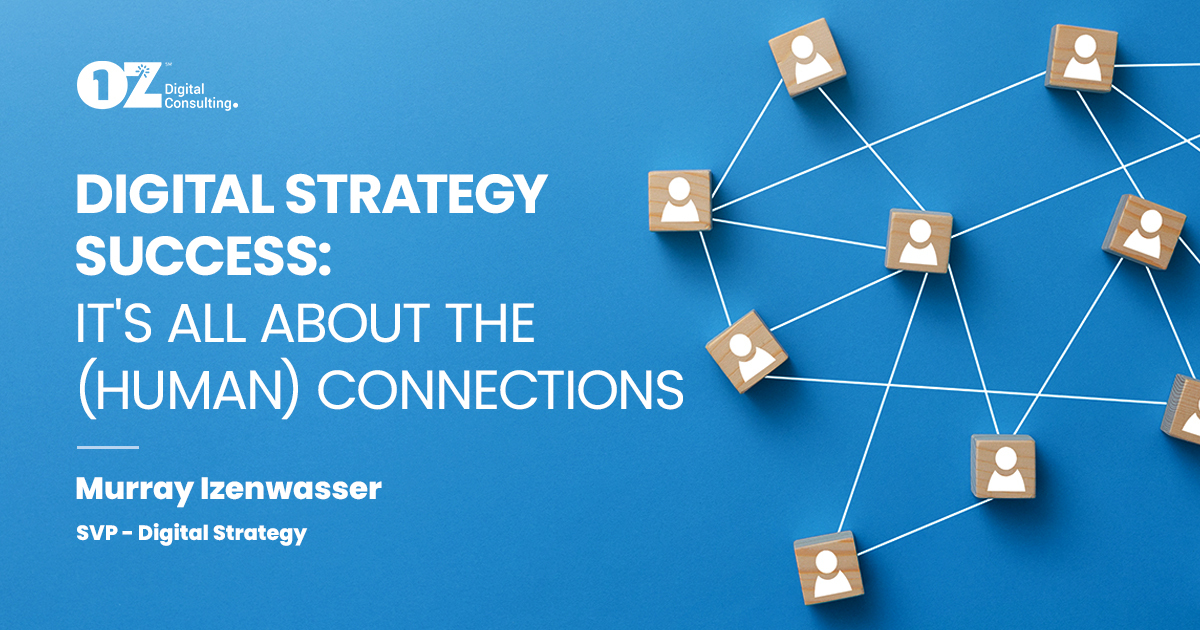
“Coming together is a beginning, staying together is progress, and working together is success.” – Henry Ford
Businesses need a unique approach to developing their digital strategies. One way to do this is by building collaborative connections that involve various stakeholders, such as customers, partners, employees, and even competitors.
This approach goes beyond the conventional focus on technology and processes. Instead, it emphasizes the value of human connections, knowledge, and interactions in shaping a successful digital strategy. It fosters an environment of shared learning, innovation, and continuous adaptation to meet the challenges of the ever-evolving digital environment:
 Engaging stakeholders through workshops and collaboration sessions: An essential aspect of driving digital strategies forward in the modern world is bringing together internal and external stakeholders in workshops or a series of collaborative sessions. These events can help align everyone around common goals, create buy-in for proposed approaches and initiatives, and facilitate knowledge sharing across the ecosystem. By engaging all relevant parties in the decision-making process, businesses can ensure that their digital strategies are more inclusive, effective, and better suited to the needs of the entire ecosystem. These workshops go outside the normal “let’s get a couple of people together to discuss” efforts common in business. These are larger events that bring stakeholders in from inside, and importantly, outside the organization. Customers and clients, vendors, partners, regulators, legal advisors, and consultants should all be involved. While time-consuming (and potentially costly) the value of bringing these disparate viewpoints together is invaluable. And that is the key – bringing those seemingly incongruent points of view together.
Engaging stakeholders through workshops and collaboration sessions: An essential aspect of driving digital strategies forward in the modern world is bringing together internal and external stakeholders in workshops or a series of collaborative sessions. These events can help align everyone around common goals, create buy-in for proposed approaches and initiatives, and facilitate knowledge sharing across the ecosystem. By engaging all relevant parties in the decision-making process, businesses can ensure that their digital strategies are more inclusive, effective, and better suited to the needs of the entire ecosystem. These workshops go outside the normal “let’s get a couple of people together to discuss” efforts common in business. These are larger events that bring stakeholders in from inside, and importantly, outside the organization. Customers and clients, vendors, partners, regulators, legal advisors, and consultants should all be involved. While time-consuming (and potentially costly) the value of bringing these disparate viewpoints together is invaluable. And that is the key – bringing those seemingly incongruent points of view together.- Co-creating with customers: Incorporating customer feedback and needs into the digital strategy is crucial. Historically, this would be done through surveys, focus groups, interviews, social media, and online forums. All are good sources of customer preferences and data. A more modern (and I believe better) approach is to bring customers in and have them work on the initiative with the company. Collaborative workshops are good. Embedding customers in project teams is even better and can foster a deeper understanding of their needs and preferences, leading to more effective and tailored solutions.
- Partnering with external stakeholders: Collaborating with external stakeholders, such as suppliers, industry associations, and even competitors, can help businesses identify new opportunities and technologies, and gain access to complementary skills and expertise. Examples of such partnerships include co-development projects, open innovation initiatives, and shared research and development programs. By organizing joint workshops and collaboration sessions, businesses can foster a spirit of teamwork, driving alignment and buy-in across the ecosystem. Many industries these days have examples of ‘competitors’ creating an innovation accelerator and venture group, acting independently based on shared guidelines of the founding companies. The goal is to raise the level of understanding of new technologies for the entire industry (and in some ways to protect the existing industry members) as new competitors and competitive models emerge. One example in the insurance industry is BrokerTech Ventures, which is “the first broker-led investor group and accelerator focused on delivering innovation to the insurance broker industry.” There are too many industries that were not focused on what was actually happening and ended up being at the whim of the new entrant that they just didn’t understand (the Publishing industry and Amazon are one example).
- Empowering employees: Employees are often the driving force behind digital innovation. Encouraging them to contribute ideas, experiment with new technologies, and develop innovative solutions is key to fostering a culture of continuous improvement and agility. Promote cross-functional collaboration and provide training and resources to support employees in their digital endeavors. Consider implementing internal innovation programs, idea competitions, or hosting employee workshops that reward employees for their creative solutions, leading to breakthroughs that propel the business forward. And a culture of being allowed to fail and learning from those approaches and attempts is key. Otherwise, your employees are not going to put their jobs and careers at risk.
- Establishing innovation hubs: Creating dedicated spaces or initiatives for innovation, such as innovation labs or hackathons, can encourage collaboration and experimentation among stakeholders. These hubs can serve as incubators for new ideas, allowing organizations to test and refine digital solutions before scaling them up for broader deployment. Giving employees the time in their week to work on initiatives is also key. Innovation to drive the strategy needs to be a fundamental part of everyone’s job.
- Leveraging data and analytics for collective insights: Traditional methods of harnessing the data and analytics from various stakeholders can provide businesses with valuable insights to inform their digital strategies. By collecting and analyzing data from customers, partners, and employees, organizations can make more informed decisions, anticipate trends, and uncover hidden opportunities. Nothing new there. But novel ways to leverage data when focusing on creating a digital strategy include real-time data analysis to adjust strategies dynamically, using predictive analytics to anticipate customer behavior, and incorporating data visualization techniques to simplify complex information for decision-makers. Many organizations have begun the process of creating digital twins to ‘see’ what is happening in the real world to help drive the usage of data while crafting their digital strategies, creating near real-time answers to questions that arise.
- Adopting a flexible and iterative approach: A successful digital strategy should be adaptable to the changing dynamics of the collaborative connections assembled to drive strategy creation. Adopting an iterative approach allows businesses to regularly review and immediately adjust their digital strategies based on feedback, new technologies, and market developments. This ensures that the strategy remains aligned with the evolving needs of the organization and its stakeholders.
- Incorporating the ecosystem to drive success: To create a more effective digital strategy, it’s essential to consider the broader ecosystem that your organization operates within. This includes understanding the role of industry regulations, emerging market trends, and the competitive landscape. By incorporating these factors into your digital strategy, you can better anticipate challenges and capitalize on opportunities. Collaborate with industry influencers, thought leaders, and regulatory bodies to stay informed and proactively adapt your strategy to the evolving business environment.
“In today’s era of volatility, there is no other way but to re-invent. The only sustainable advantage you can have over others is agility, that’s it. Because nothing else is sustainable, everything else you create, somebody else will replicate.” – Jeff Bezos*
Developing a digital strategy through the lens of collaborative connections offers a unique and rounded approach to navigating today’s digital frontier. By focusing on fostering partnerships, co-creating with customers, empowering employees, leveraging collective insights, and incorporating the broader ecosystem, businesses can build a digital strategy that drives growth and ensures long-term success in an ever-changing digital landscape.
 Embracing the collaborative connections in your digital strategy development can not only result in innovative, customer-centric solutions but also enhance organizational resilience and agility. By fostering strong relationships with stakeholders and promoting a culture of collaboration and innovation, businesses can unlock their full potential and create a competitive advantage in the digital era. Workshops and collaborative sessions involving stakeholders across the ecosystem play a crucial role in driving alignment and buy-in, ensuring that your digital strategy is adaptable, effective, and responsive to the needs of all involved parties, and importantly, the business itself.
Embracing the collaborative connections in your digital strategy development can not only result in innovative, customer-centric solutions but also enhance organizational resilience and agility. By fostering strong relationships with stakeholders and promoting a culture of collaboration and innovation, businesses can unlock their full potential and create a competitive advantage in the digital era. Workshops and collaborative sessions involving stakeholders across the ecosystem play a crucial role in driving alignment and buy-in, ensuring that your digital strategy is adaptable, effective, and responsive to the needs of all involved parties, and importantly, the business itself.
In today’s dynamic digital world, taking a unique approach to a digital strategy that emphasizes collaboration and human connections can empower businesses to navigate challenges, seize opportunities, and stay ahead of the curve. By investing in relationships with customers, employees, partners, and industry influencers, companies can cultivate an environment that fosters continuous learning, innovation, and growth.
And ultimately (and ironically?), the key to success in the digital age lies in recognizing the power of these human-to-human collaborative connections and leveraging them to create a flexible, customer-centric, and resilient digital strategy that supports long-term business objectives and drives sustainable growth.
 As you continue to build and refine your digital strategy, it’s important to maintain an open, collaborative mindset and stay receptive to new ideas, feedback, and insights from your ecosystem. Embrace the concept of organizational lifelong learning, enabling your organization to adapt to changes more effectively and stay ahead in the digital race. Prioritize nurturing and strengthening the connections within your ecosystem. Regularly engage with stakeholders through workshops, conferences, webinars, and other interactive (and real-world) events. These activities provide invaluable opportunities to exchange knowledge, explore new technologies, and discuss emerging trends that may impact your digital strategy.
As you continue to build and refine your digital strategy, it’s important to maintain an open, collaborative mindset and stay receptive to new ideas, feedback, and insights from your ecosystem. Embrace the concept of organizational lifelong learning, enabling your organization to adapt to changes more effectively and stay ahead in the digital race. Prioritize nurturing and strengthening the connections within your ecosystem. Regularly engage with stakeholders through workshops, conferences, webinars, and other interactive (and real-world) events. These activities provide invaluable opportunities to exchange knowledge, explore new technologies, and discuss emerging trends that may impact your digital strategy.
Also, invest in the right tools and platforms that can facilitate seamless communication and collaboration among stakeholders. Ensure that all parties are kept informed and up to date on the latest developments and can easily share their insights and ideas. They should be part of your team for as long as they want to be. (As an aside: ex-employees can be invaluable resources – fully untapped in today’s modern business world.)
Remember that the digital landscape is always evolving, and your digital strategy should be adaptable to this constant change. Reviewing and reassessing your strategy periodically, while considering the insights gained from your collaborative connections, ensures that it remains relevant and effective.
A winning digital strategy in the modern world is one that is built on strong collaborative connections, embracing the contributions of customers, employees, partners, and other stakeholders. By fostering a culture of openness, innovation, and adaptability, you can propel your organization toward digital success and long-term sustainability in an ever-changing landscape. Embrace the power of collaboration and seize the opportunities that arise from these connections to drive your business forward and achieve lasting success.
*Attributed to Jeff Bezos, but I could not find the actual/original source. Quoted by many, including Amazon corporate materials.
Hi, I am Murray Izenwasser, the SVP of Digital Strategy at OZ Digital Consulting. If you would like to discuss creating such a framework, contact me – that’s what my team and I do for our clients. In fact, we have a platform that we use with our clients called Launchpad where we do exactly this, as we help them build out their digital strategies. Message me about how we can do this for you.



